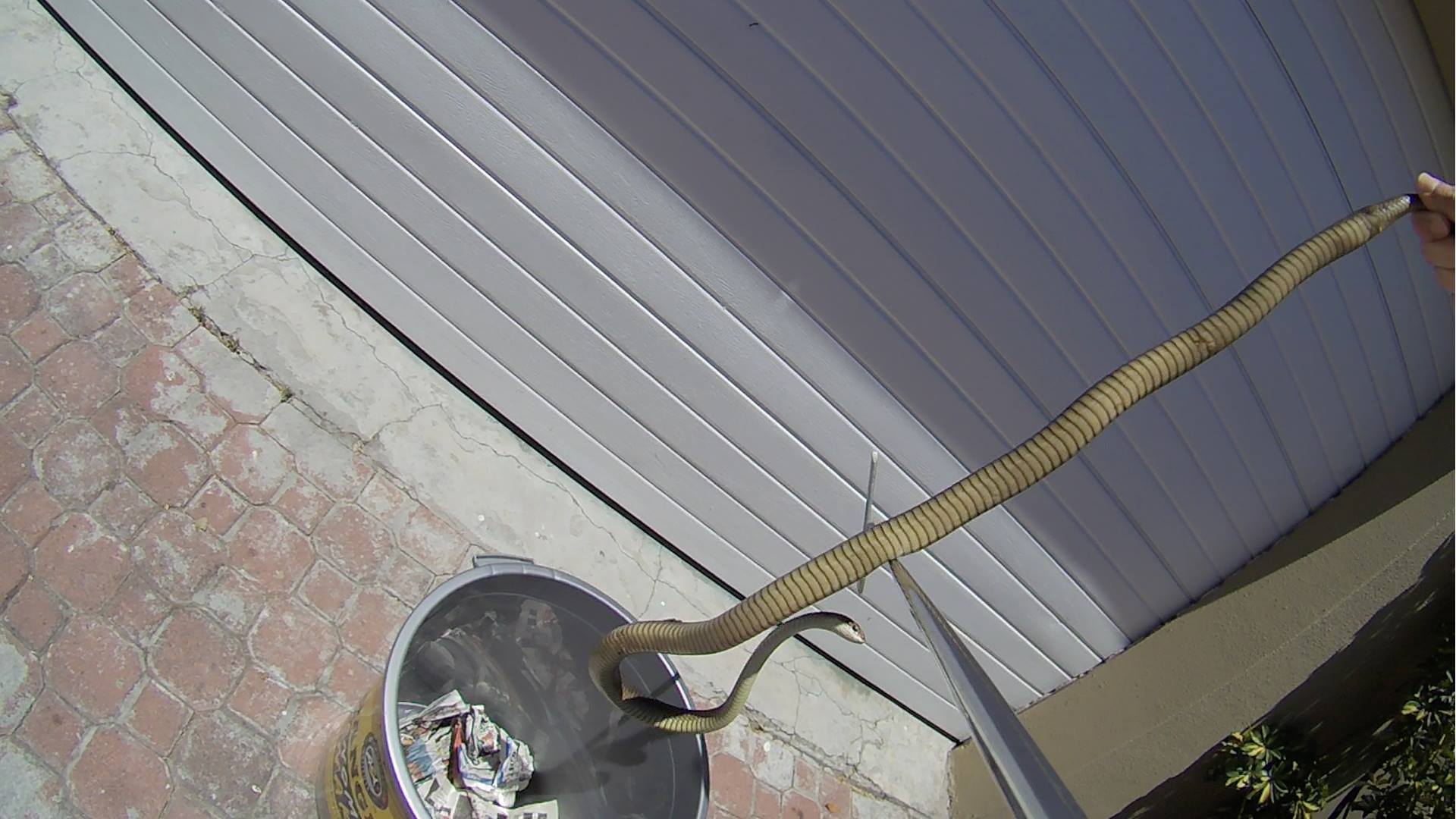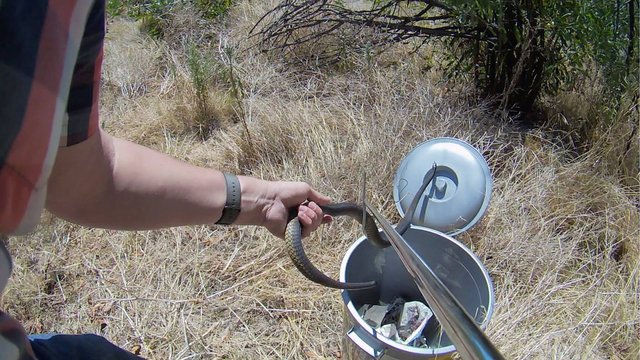Male Boomslang rescued near Table View (2017-01-21)
While I was on my way to drop off the Common Slug-Eater I had picked up near Uitzicht earlier today, I received a call about a Boomslang in someone’s garden in Table View.
The Boomslang was very relaxed when I arrived, hanging in a shrub near the front door of the house with several bystanders keeping an eye on it. I relocated it to a safe place back in the bush shortly afterwards.
--


Boomslang are known for their strikingly large eyes - the largest of any African snake. Females are light to olive brown with dirty white to brown bellies, whereas males may have a variety of colors.
Shy and diurnal (active during the day), they spend most of their lives in trees and shrubs where they hunt eggs, birds, frogs, chameleons, and other tree-dwelling lizards.
Boomslang venom is haemotoxic, which means that it affects the clotting mechanism in blood and leads to severe internal and external bleeding, or even haemorrhage if untreated. Although potent, the venom is slow-acting and may take more than 24 hours to produce serious symptoms - an effective anti-venom is available in some locations.
There are two common myths about the Boomslang: firstly, that they drop from trees onto people who walk by (they don’t), and secondly that because they’re rear-fanged they can only bite you on your little finger (they are rear-fanged, but can open their jaws 170 degrees and bite you almost anywhere on your body).
Hi! I am a robot. I just upvoted you! I found similar content that readers might be interested in:
http://www.dailymotion.com/video/x6debub
Sap